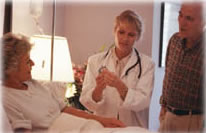 Leg Stress Fracture, Tibia Leg Stress Fracture, Tibia |
 Liver Injury Liver Injury |
 Neck Dislocation Neck Dislocation |
 Neck Fracture Neck Fracture |
 Neck Sprain Neck Sprain |
 Neck Strain Neck Strain |
 Nose Injury Nose Injury |
 Pelvis Strain, Hip-Trunk Pelvis Strain, Hip-Trunk |
 Pelvis Strain, Ischium Pelvis Strain, Ischium |
 Perineum Contusion Perineum Contusion |
 Rib Dislocation Rib Dislocation |
 Rib Fracture Rib Fracture |
 Rib Sprain Rib Sprain |
 Rib Strain Rib Strain |
 Shoulder-Blade (Scapula) Bursitis Shoulder-Blade (Scapula) Bursitis |
 Shoulder-Blade (Scapula) Contusion Shoulder-Blade (Scapula) Contusion |
 Shoulder-Blade Fracture, Acromion Shoulder-Blade Fracture, Acromion |
 Shoulder-Blade (Scapula) Fracture, Coracoid Process Shoulder-Blade (Scapula) Fracture, Coracoid Process |
 Shoulder-Blade (Scapula) Fracture, Glenoid Fossa Shoulder-Blade (Scapula) Fracture, Glenoid Fossa |
 Shoulder-Blade (Scapula) Fracture, Neck Shoulder-Blade (Scapula) Fracture, Neck |
 Shoulder-Blade (Scapula) Strain Shoulder-Blade (Scapula) Strain |
 Shoulder Bursitis, Gleno-Humeral Shoulder Bursitis, Gleno-Humeral |
 Shoulder Bursitis, Subacromial Shoulder Bursitis, Subacromial |
 Shoulder Contusion Shoulder Contusion |
 Shoulder Dislocation Shoulder Dislocation |
 Shoulder Sprain, Acromio-Clavicular Shoulder Sprain, Acromio-Clavicular |
 Shoulder Sprain, Gleno-Humeral Shoulder Sprain, Gleno-Humeral |
 Shoulder Strain Shoulder Strain |
 Shoulder Tendinitis & Tenosynovitis Shoulder Tendinitis & Tenosynovitis |
 Skin Abrasion Skin Abrasion |
 Skin Laceration Skin Laceration |
 Skin Puncture Wound Skin Puncture Wound |
 Spine Fracture, Lower Thoracic & Lumber Region Spine Fracture, Lower Thoracic & Lumber Region |
 Spine Fracture, Sacrum Spine Fracture, Sacrum |
 Spine Fracture, Tailbone Spine Fracture, Tailbone |
 Spine Stress-Fracture, Neck or Back Spine Stress-Fracture, Neck or Back |
 Spleen Rupture Spleen Rupture |
 Thigh-Bone Fracture Thigh-Bone Fracture |
 Thigh Contusion Thigh Contusion |
 Thigh Hematoma Thigh Hematoma |
 Thigh Injury, Hamstring Thigh Injury, Hamstring |
 Thigh Strain, Quadriceps Thigh Strain, Quadriceps |
 Thigh Strain Thigh Strain |
 Thumb Fracture Thumb Fracture |
 Thumb Sprain Thumb Sprain |
 Toe Dislocation Toe Dislocation |
 Toe Exostosis Toe Exostosis |
 Toe Fracture Toe Fracture |
 Tooth Injury & loss Tooth Injury & loss |
 Wrist Contusion Wrist Contusion |
 Wrist Dislocation, Lunate Wrist Dislocation, Lunate |
 Wrist Dislocation, Radius or Ulna Wrist Dislocation, Radius or Ulna |
 Wrist Ganglion Wrist Ganglion |
 Wrist Sprain Wrist Sprain |
 Wrist Strain Wrist Strain |
 Wrist Tenosynovitis Wrist Tenosynovitis |
|
|
Shoulder Dislocation
Displacement of the humerus (upper-arm bone) from its socket in the shoulder joint. A forward displacement of the humerus is the most common type of shoulder dislocation.
Body Parts Involved
-
Shoulder joint.
- Humerus.
- Soft tissue surrounding the dislocation, including nerves, tendons, ligaments, muscles, and blood vessels. Injury to nerves in the axilla (armpit) is quite common.
Causes
- Direct upward blow to the shoulder or backward force on an extended arm.
- End result of a severe shoulder sprain.
- Congenital abnormality, including shallow or malformed Joint surfaces.
- Powerful muscle twisting or a violent muscle, contraction. Some people can willfully produce a recurrent dislocation.
Signs & Symptoms
-
Excruciating pain at the time of injury.
- Loss of function of the dislocated shoulder joint and severe pain when attempting to move it.
- Visible deformity if dislocated bones lock in the dislocated position. If they spontaneously reposition themselves, no deformity will be visible, but damage will be the same.
- Tenderness over the dislocation.
- Swelling and bruising at the injury site.
- Numbness or paralysis in the arm from pressure, pinching or cutting of blood vessels or nerves.
Treatment
Note:- Follow your doctor's instructions. These instructions are supplemental.
First Aid
- Keep the person warm with blankets to
decrease the possibility of shock.
- Cut away clothing if possible, but don't move
the injured area to remove clothing. Untrained
should not attempt to reposition a
dislocated shoulder.
- Immobilize the neck, dislocated shoulder, and
elbow with padded splints or a sling.
- Follow instructions for R.I.C.E., the first letters of rest, ice, compression and elevation.
- The doctor will manipulate the dislocated
bones to return them to their normal position. Manipulation should be done within 6 hours, if
possible. After that time, internal bleeding and
displacement of body fluids may lead to shock.
Also, many tissues lose their elasticity and
become difficult to return to a normal position. Relocating a dislocated shoulder frequently requires general anesthesia.
Continuing Care
At home:
- Use an ice pack 3 or 4 times a day. Wrap ice
chips or cubes in a plastic bag, and wrap the
bag in a moist towel. Place it over the injured
area for 20 minutes at a time.
- After 48 hours, localized heat promotes
healing by increasing blood circulation in the injured area. Use hot baths, showers,
compresses, heat lamps, heating pads, heat
ointments or liniments, or whirlpools.
- Exercise all muscle groups not immobilized in a cast or sling. Muscle contractions
promote alignment and hasten healing.
- Massage gently and often to provide comfort and decrease swelling.
Medication
Your doctor may prescribe:
- General anesthesia or muscle relaxants to
make joint manipulation possible.
- Acetaminophen to relieve moderate pain.
- Narcotic pain relievers for severe pain.
- Antibiotics to fight infection if surgery is necessary.
Home Diet
- Drink only water before manipulation or
surgery to correct the dislocation. Solid food in your stomach makes vomiting while under
general anesthesia more hazardous.
- During recovery, eat a well-balanced diet that
includes extra protein, such as meat, fish,
poultry, cheese, milk and eggs. Increase fiber
and fluid intake to prevent constipation that may result from decreased activity.
Diagnostic Measures
-
Your own observation of symptoms.
- Medical history and exam by a doctor.
- X-rays of the shoulder joint and adjacent bones.
Prevention Tips
- Build your overall strength and muscle tone with a long-term conditioning program appropriate for your sport.
- Warm up adequately before physical activity.
- For participation in contact sports, protect
shoulders with special equipment such as
shoulder pads. After recovery, strapping or elastic wraps may protect against re-injury.
|
|





